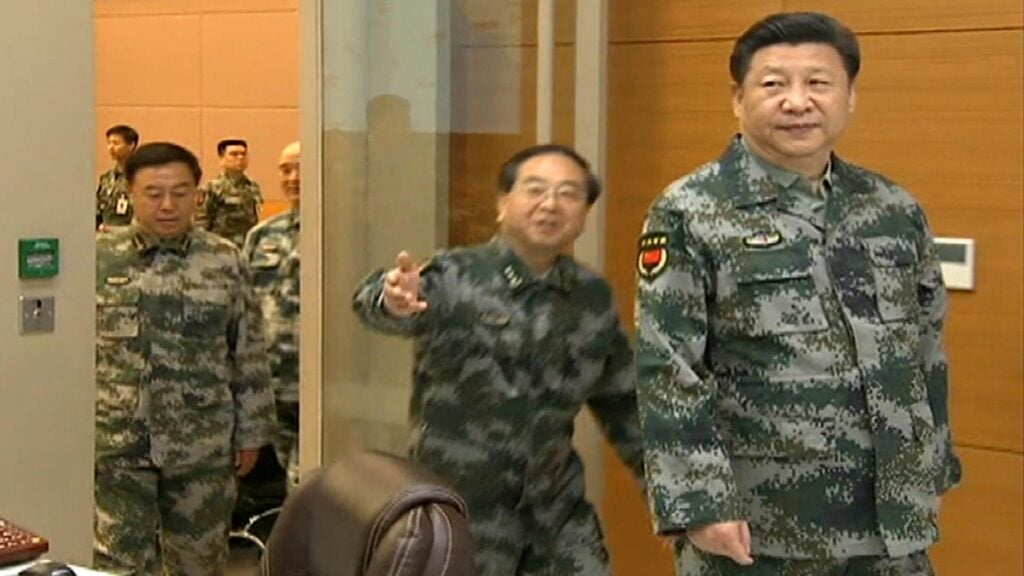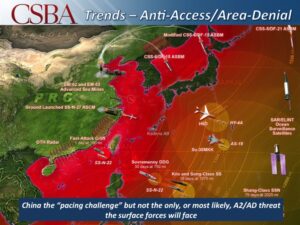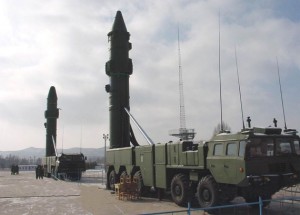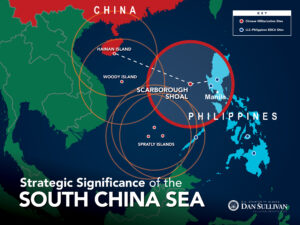What PRC President Is Really Doing; What The Uniform Means
Posted on

Chinese leader Xi Jinping’s recent appearance in a military uniform while touring a military command center and the attendant description of him as “commander in chief” of the facility, drew extensive Chinese and foreign media attention.
Was his appearance in uniform a reflection of a militarizing China? Was the description of him as “commander in chief” of this new entity a reflection of ongoing political tensions with the military? Unfortunately, those discussions have tended to miss the bigger picture.
In the first place, while Xi appeared in a camouflage uniform during this visit, video footage taken aboard a Chinese submarine in 2013 and accompanying a story in 2014 show him in other uniform attire. So, this is not exactly setting a precedent.
Similarly, the term “zong zhihui” means overall commander. The phrase, as used here, has been applied to other persons in other situations. For example, in stories about the Shenzhou space program, the person in charge has been termed “zong zhihui.”
It is important to remember that Xi Jinping, in his role as Chairman of the Central Military Commission (CMC) is already essentially commander-in-chief of the military. Indeed, the Chinese coverage describes him as General Secretary of the Chinese Communist Party (CCP) Central Committee, national president, and chairman of the Central Military Commission, before appending “overall commander.” So, whether that title was added or not, there is no more question that Xi commands the military, including this facility, than whether Barack Obama is overall commander of an aircraft carrier since he is commander-in-chief of the US armed forces.
What is significant, and merits far more attention and discussion, is the nature of the facility that Xi visited. This Military Commission Joint Command Center (junwei lianzhi zhongxin; 军委联指中心) is a reflection of the increasing emphasis placed upon joint operations in the PLA, and is a physical reflection of one of the major reorganizations that the PLA is currently undertaking.
 PLA Modernization: Getting Ready to Fight “Informationized Wars”
PLA Modernization: Getting Ready to Fight “Informationized Wars”
Since the end of the first Gulf War (Desert Shield/Desert Storm) in 1990, the People’s Liberation Army (PLA) has been striving to become more joint. Careful observations and analyses of other peoples’ wars has led the PLA leadership to conclude that future warfare will be waged through the joint efforts of multiple services, employing a variety of high technology weapons.
These efforts led to what some have termed the “year of regulations” in 1999, when the PLA thoroughly overhauled its warfighting regulations and doctrine. This was followed by the steady modernization of PLA equipment and revisions of PLA training procedures and regulations.
Having witnessed the NATO intervention in the Balkans, the American invasion of Afghanistan, the toppling of the Saddam Hussein regime in Iraq, as well as gaining experience in joint operations through its own exercises and efforts, the PLA view of future warfare has evolved further. Where it previously viewed future wars as “local wars under modern, high-technology conditions,” it is now focused on “local wars under informationized conditions.” This latter element reflects not only the growing importance of information and information technology for supporting operations in future wars, but as important, the belief that information itself will be a key resource in those wars. The ability to establish “information dominance” will be a decisive factor in these future conflicts.
Overhauling the PLA

Chinese DF-21 missile launchers
The effort to prepare the PLA for such wars has led to the announcement of three major overhauls of the PLA organization. First, it has seen the reorganization of the warfighting organizations. Where there had been seven military regions, there are now five war zones (zhanqu). As important, these new war zones are headed by joint operations headquarters—which the CMC Joint Operations Center will presumably both link to and oversee. Previously, such joint campaign headquarters had been ad hoc entities rather than permanent ones.
I believe Xi’s visit is a political statement reminding the PLA that this massive adjustment in how it approaches warfare—permanent joint headquarters commanding forces that are more joint in outlook — is here to stay. By describing Xi’s appearance at the Military Commission Joint Command Center as being in the role of the Center’s commander-in-chief (or “overall commander”), the PLA is put on notice that this is an effort endorsed by Xi himself—who, of course, is also head of the entire PLA.
In addition, the Central Military Commission (CMC), which oversees the entire military, has gone from four General Departments to 15 departments, offices, and commissions. This has seen the elevation of mobilization preparations and training efforts to their own departments. This is the first change in CMC organization since 1999, and the most extensive since the 1960s.
Part of this reorganization includes rebranding the General Staff Department as the Joint Staff Department. Again, it is a reminder to the PLA that it must think beyond individual services to joint, inter-service approaches to warfare.
Finally, the number of services has increased. The ground forces, which previously dominated the PLA politically and bureaucratically, are now their own service. The implication is that the 15 departments, offices, and commissions of the CMC no longer are ground force billets, and that while the CMC remains (for now) largely comprised of ground force officers, it will be a reflection of the PLA as a whole. The ground forces will be an equal counterpart to the other services.
Meanwhile, the PLA Second Artillery, which had been a super-branch, is now elevated to a service-level entity, and renamed the PLA Rocket Forces. They will sit alongside the PLA Strategic Support Force (PLASSF). This entity is perhaps the most unique, and most far-reaching, of the service-level reforms. The PLASSF will contain China’s space forces, electronic warfare forces, and network warfare forces.
Where the Russians have created an aerospace service, the Chinese have created an information warfare service. In the struggle to secure information dominance in future informationized conflicts, the PLA is stating that it expects to have to fight with an integrated set of forces capable of dominating the electronic, network (cyber), and space domains. By creating a single service, they are making clear that these forces will be expected to work together in developing doctrine, integrating training, and executing missions.

Graphic courtesy Sen. Dan Sullivan
Focus on Fighting and Winning
For American analysts, too often the focus is on minutiae. What was Xi wearing, what was the specific wording used to describe his position? Meanwhile, the far larger, fundamental changes that are underway are subject to far less discussion.
Any one of these reforms would constitute a tectonic shift in a military. All three together reflect a longstanding effort, a culmination (but not the culmination) of efforts that date back near three decades. While Xi Jinping is overseeing their implementation, they are no more the product of his efforts alone than the Chinese space program or economic modernization. But their realization is a reflection on how seriously the PLA takes the instructions that various Chinese leaders have emphasized over this period: Be prepared to fight and win the next war.
Subscribe to our newsletter
Promotions, new products and sales. Directly to your inbox.
